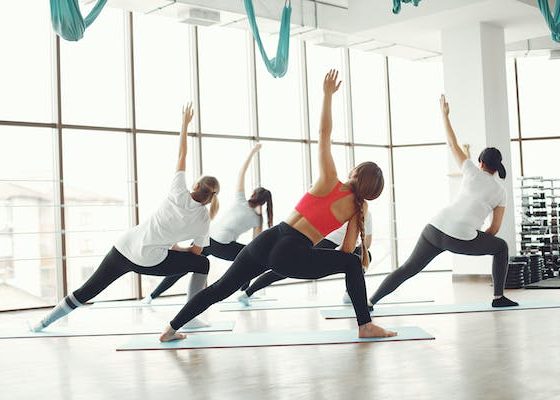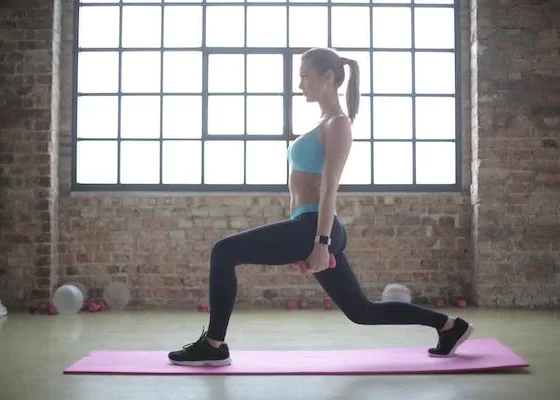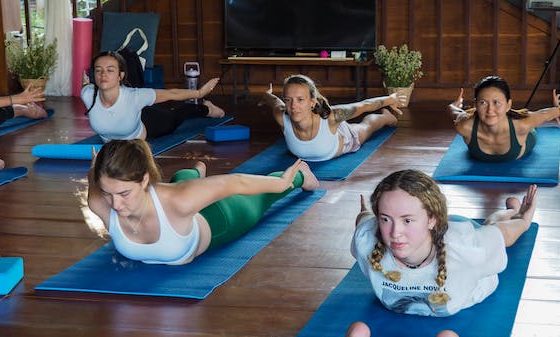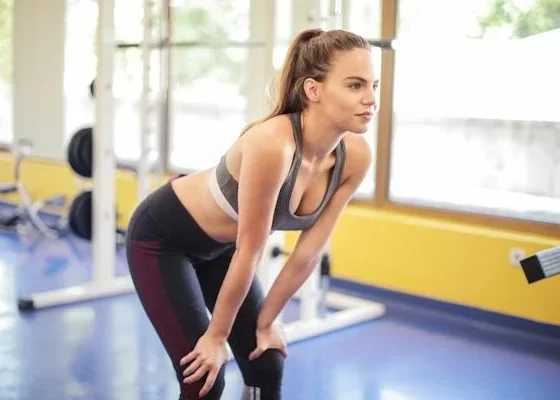Biking isn’t merely about moving from point A to point B; it’s a symphony of muscle engagement, a holistic workout that extends beyond cardiovascular benefits. As you glide through landscapes and conquer challenging terrains, your muscles work tirelessly, sculpting and toning various body parts. This article delves into the lesser-explored realm of bicycling, focusing on its benefits and its surprising impact on different muscle groups, making it a comprehensive full-body workout experience.
What is Bicycling and its Health Benefits?
Cycling provides a healthy, low-impact exercise option for people of all ages, from children to seniors. It’s enjoyable, budget-friendly, and environmentally sustainable. Adding cycling to your daily activities, like commuting to work or completing errands, is an effective method to include regular exercise. Globally, an estimated one billion individuals ride bicycles daily for transportation, leisure, and sports.
Cycling offers a convenient path to improve overall health with just two to four hours a week. It’s a low-impact exercise that reduces strain and injury risks while engaging major muscle groups for a thorough workout. With its simplicity and universal appeal, cycling doesn’t demand advanced physical skills and can be easily picked up and retained. Moreover, it enhances strength, stamina, and aerobic fitness, allowing for customizable intensity levels suitable for various fitness levels and recovery stages. The thrill of outdoor cycling, with its sense of adventure and freedom, often fosters regular participation compared to indoor activities. Additionally, cycling is a time-efficient transportation mode, substituting sedentary habits with healthy exercise.
Regular cycling offers many health benefits as it primarily engages aerobic activity, stimulating the heart, blood vessels, and lungs. With deeper breathing, increased perspiration, and elevated body temperature, overall fitness levels improve. The health advantages are enhanced cardiovascular fitness, augmented muscle strength and flexibility, improved joint mobility, reduced stress levels, better posture, and coordination, strengthened bones, lowered body fat levels, prevention or management of disease, and reduced anxiety and depression.
The relationship between cycling and targeted health concerns:
Cycling can enhance physical and mental well-being while decreasing the likelihood of encountering various health issues.
Weight Control and Obesity
Cycling effectively manages or reduces weight by increasing your metabolic rate, promoting muscle growth, and burning body fat. However, cycling should be complemented with a nutritious eating regimen for weight loss goals. As cycling is an adaptable form of exercise, you can gradually adjust the duration and intensity to build up and suit your preferences. Studies suggest aiming to burn at least 8,400 kilojoules (about 2,000 calories) weekly through physical activity. A steady cycling session typically burns around 1,200 kilojoules (about 300 calories) per hour. If you cycle twice daily, the kilojoules expended accumulate quickly. Research from the UK indicates that a half-hour bike ride each day can burn nearly five kilograms of fat within a year.
Cardiovascular Function
Cardiovascular diseases encompass conditions like stroke, high blood pressure, and heart attack. Regular cycling enhances heart, lung, and circulation function, thus diminishing the risk of cardiovascular ailments. Cycling strengthens heart muscles, reduces resting pulse rates, and lowers blood fat levels. Studies indicate that individuals who cycle to work experience significantly less pollution than car commuters, improving lung function. A Danish research spanning 14 years involving 30,000 individuals aged 20 to 93 revealed that consistent cycling helped shield individuals from heart disease.
Cancer Risk Reduction
Numerous researchers have investigated the correlation between exercise and cancer, mainly focusing on colon and breast cancer. Studies indicate that cycling can lower the risk of bowel cancer, and there is some evidence suggesting that regular cycling may reduce the likelihood of breast cancer.
Diabetes Risk Reduction
The increase in type 2 diabetes occurred and poses a significant public health challenge. Insufficient physical activity is a primary factor contributing to the development of this condition. Extensive research conducted in Finland revealed that individuals who cycled for more than 30 minutes daily experienced a decrease in the risk by 40 percent developing diabetes.
Strength, Balance, and Coordination Improvement
Cycling enhances strength, balance, and coordination, potentially reducing the risk of falls and fractures. It is an excellent exercise option for individuals with osteoarthritis, as it is low-impact and imposes minimal stress on joints. However, cycling does not directly address osteoporosis, a bone-thinning condition, as it is not a weight-bearing exercise.
Mental Health Alleviations
Regular bike riding can alleviate mental health conditions like depression, stress, and anxiety. This relief stems from both the physical effects of exercise and the enjoyment of cycling.
Handcycles and Health
Handcycles resemble recumbent tricycles but are propelled using hand controls instead of foot pedals. Velcro straps may be utilized to secure the hands to the pedals as needed. This type of tricycle enables amputees, individuals with spinal injuries, and those recuperating from conditions like stroke to engage in cycling for exercise and recreation. Hand cyclists experience cardiovascular and aerobic advantages akin to those of traditional cyclists.

Which Muscles Will You Sculpt on Your Cycling?
The Leg Work
Quadriceps Quandary
The quadriceps, comprising the vastus lateralis, vastus medialis, vastus intermedius, and rectus femoris, take center stage in the pedaling powerhouse. Their primary role involves extending the knee during the downward stroke of cycling, generating the major force required to propel the bike forward.
Hamstring Harmony
While the quadriceps drive the downward stroke, the hamstrings at the back of the thigh play a crucial role in the upward pull of the pedal. This balanced interplay between the quadriceps and hamstrings ensures a fluid and efficient pedaling motion.
Calf Chronicles
Often underestimated but essential, the calf muscles, including the gastrocnemius and soleus, come into play to stabilize the foot and ankle, providing support during each pedal rotation.
Gluteus Maximus
Your glutes, particularly the gluteus maximus, the body’s most significant muscle, engage significantly during cycling. They contribute power and stability, especially during climbs and sprints.
Core Strength
The Core Connection
A strong core is the foundation of stability in cycling. It’s about the abdominal muscles and the deep-lying stabilizers like the transverse abdominis, which are crucial for maintaining balance and posture while on the bike.
Transverse Triumph
The transverse abdominis acts as the body’s natural corset, providing support and stability to the lumbar spine and pelvis during dynamic movements, making it a key player in cycling balance.
Obliques in Action
The oblique muscles, both internal and external, aid in stabilizing the torso while leaning into turns or controlling the lateral movement of the bike.
Upper Body Involvement
Shoulder Shuffle
Surprisingly, the shoulders engage to maintain the upper body stability, particularly while navigating uneven terrain or navigating corners. They aid in steering control and maintaining proper posture.
Latissimus Dorsi Dance
The lats, the large muscles spanning the back, get involved during uphill battles, assisting in pulling and lifting the body during intense climbs.
Arm Agility
While not the primary focus, the arms support the upper body, absorb shock, and assist in maneuvering the bike, especially during quick turns and changes in direction.
The Importance of Grip
The continuous grasping of the handlebars engages the muscles of the forearm and hands, contributing to overall arm strength and endurance.
Posture Matters
Back to Basics
Maintaining a proper back posture during cycling prevents strain and potential injuries. Focus on keeping the spine aligned and preventing excessive rounding or arching.
Neck Nirvana
Ensuring a relaxed but aligned posture is essential to avoid strain on the neck muscles, allowing the neck muscles to support the head without unnecessary tension.
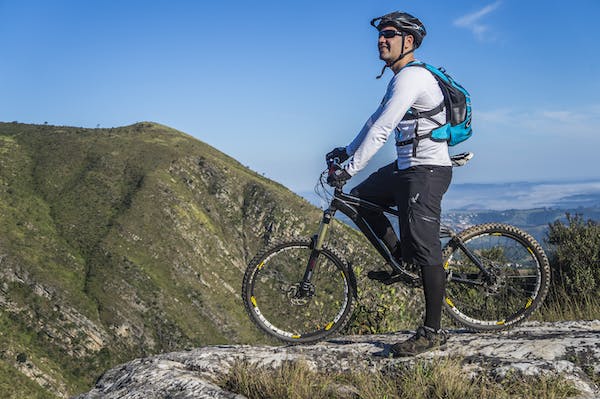
Breath Control
The Respiratory Rhythm
Proper breathing technique plays a pivotal role in sustaining muscle performance. Coordinating breath with pedal strokes helps oxygenate the muscles efficiently.
Diaphragmatic Dominance
The diaphragm, a primary breathing muscle, becomes stronger through cycling, enhancing endurance and overall respiratory function.
Saddle Sores and Perineal Pressure
Saddle Sores Unveiled
Extended rides can lead to discomfort and potential health issues related to pressure on the perineal area. Proper bike fit and adjustments can mitigate these issues.
Alleviating Pressure Points
Making minor adjustments to the bike setup and taking breaks during long rides can help prevent and alleviate perineal discomfort.
Muscle Recovery and Stretching
Post-Ride Recovery Rituals
Post-ride recovery techniques, such as stretching, hydration, and proper nutrition, aid in soothing tired muscles and preventing stiffness.
Stretching for Cyclists
Essential stretches tailored for cyclists help maintain muscle flexibility and prevent injuries. These include stretches for the legs, back, and shoulders.
Riding Techniques
The Art of Cadence
Understanding and optimizing cadence (pedal revolutions per minute) impacts various muscle groups’ engagement and overall riding efficiency.
Uphill Challenge
Climbing engages different muscle groups, requiring more power from the glutes, hamstrings, and core. It’s a test of endurance and strength.
Downhill Dynamics
Downhill riding involves relaxing the muscles while maintaining control and balance, offering a different form of engagement and requiring swift reflexes.
Conclusion:
Biking is a hidden gem for a full-body workout, sculpting and toning muscles across various body parts. The engagement of muscles in cycling goes beyond the commonly recognized leg workout, contributing to overall strength, stability, and endurance. This revelation highlights the multi-faceted benefits of biking, making it a compelling choice for those seeking a holistic fitness routine. So, grab your bike and pedal your way to a well-sculpted body and a fulfilling fitness journey.
